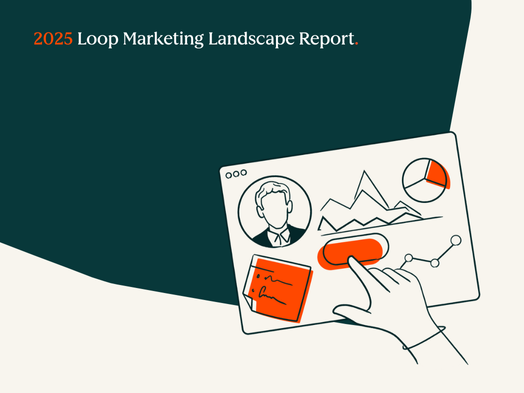By Win Dean-Salyards, Senior Marketing Consultant at Heinz Marketing
As 2026 planning kicks off, one truth is clear: the era of “set-it-and-forget-it” go-to-market plans is over. Budgets are tighter. Buying committees are larger. The margin for error has all but disappeared. Yet most GTM teams still spend months building campaigns, messaging, and ICP definitions based on assumptions rather than validation. The most effective organizations are flipping that script. They’re treating GTM planning like a science: forming hypotheses, running small tests, and applying the insights systematically across their growth strategy.
If 2025 was about alignment, 2026 will be about validation, proving what works before scaling it. Here’s how to build a GTM testing strategy that helps your team move faster, learn smarter, and scale with confidence.

Start with Market Hypotheses, Not Hunches
Every good GTM test starts with a hypothesis: a specific, testable belief about your market, your buyers, or your message. A hypothesis is not a guess. It’s a statement that connects an assumption to a measurable behavior that can be proven or disproven through data. Think of it this way: your GTM plan is built on dozens of small assumptions about who your ideal customer is, what problems they care about most, what language motivates them, and which channels they prefer. A hypothesis helps you isolate and test one of those assumptions before you scale it.
Examples of strong market hypotheses:
- Market hypothesis: Healthcare compliance leaders respond more to educational, product-led content than direct sales outreach.
- Message hypothesis: Messaging focused on “audit readiness” will outperform “risk visibility” among financial services buyers.
- Channel hypothesis: Retargeting in LinkedIn Ads will drive higher engagement among in-market accounts than nurture email alone.
Good hypotheses share a few traits:
- They’re specific (focused on one assumption)
- They’re measurable (you know what success looks like)
- They’re actionable (a result leads to a decision)
If your “hypothesis” sounds like “we think this might work,” it’s too vague. Refine it until you can clearly describe what you expect to happen, and what would prove you wrong.
Design a GTM Testing Plan That Prioritizes Speed and Signal
Once you’ve defined your hypotheses, it’s time to design tests that can deliver a useful signal quickly, without burning cycles or budget.
A strong test plan answers five key questions:
- Objective: What decision will this test inform?
- Success metric: What measurable result defines validation?
- Audience segment: Who exactly are you testing this with?
- Test scope: How narrow can you make the test while keeping results meaningful?
- Timeframe: How long will you run before evaluating?
For example, if you’re testing whether your cybersecurity messaging resonates more with CISOs or compliance directors, you don’t need a six-month campaign. You need a two-week paid campaign or email sequence with clearly differentiated message variants and a conversion KPI tied to engagement or meeting booked rate.
In 2026, your testing strategy should aim for:
- Small, fast experiments: Two to three hypothesis-driven tests per quarter, each tied to a specific GTM decision.
- Shared visibility: Use dashboards that make test results visible across sales, marketing, and product teams.
- Learning velocity: Focus on what you learn, not just what wins. Every “failed” test eliminates uncertainty and sharpens your next move.
Remember: the goal isn’t to run perfect tests. It’s to run informative ones.
Build a Hypothesis-to-Strategy Feedback Loop
Testing only matters if you feed the learnings back into your strategy. The real power of hypothesis-driven GTM planning lies in the feedback loop, the process of documenting, classifying, and applying what you learn across your organization.
Here’s how to operationalize it:
Capture outcomes consistently.
For every test, document what you tested, the outcome, and what it means. Even small insights, like one audience segment showing a 15% higher engagement rate, can inform major strategy shifts later.
Classify learnings.
Tag test results by category:
- Market segment: Which audiences performed better or worse?
- Message: What language, tone, or pain points resonated?
- Channel: Which delivery method drove the highest response?
- Motion: Did PLG, ABM, or partner-led efforts show more traction?
Feed insights forward.
Once you’ve categorized learnings, push them back into your GTM systems:
- ICP refinement: Adjust your target account lists based on validated segments.
- Messaging hierarchy: Promote high-performing messages to core campaign narratives.
- Channel mix planning: Shift spend toward channels with proven conversion efficiency.
- Sales enablement: Arm sales with insights on which value props actually move deals forward.
In other words, don’t let your tests live in isolation. Turn them into inputs for more innovative annual planning, campaign design, and budget allocation.
Apply and Scale What Works
After a few test cycles, patterns will start to emerge, and this is where testing transitions into a growth strategy. Scaling doesn’t mean “doing more of everything.” It means deliberately expanding the things you’ve validated to drive predictable outcomes. Here’s how to connect small wins to scalable plays:
Validated messages → Core campaign narratives
If “data protection confidence” consistently outperforms “cyber resilience” in clickthroughs and meetings booked, it becomes part of your master messaging hierarchy.
Winning audience segments → Target tier criteria
If mid-market financial services firms show higher pipeline velocity than enterprise accounts, revise your Tier 1 target account list accordingly.
Successful channels → Budget priorities
If retargeting ads are driving MQL-to-SQL conversions at a lower cost than webinars, shift dollars there.
Behavioral signals → Engagement scoring inputs
Use test insights to refine your 6sense or Demandbase scoring models with real behavioral indicators of buying intent.
Scaling validated insights is how GTM teams build compounding advantage; every learning feeds a smarter playbook for the next quarter.
Make Testing a Habit, Not a Phase
Testing isn’t a campaign, it’s a culture. The most effective B2B GTM organizations don’t treat experimentation as something you do before launching a strategy. They make it part of how strategy is built.
In practice, that means:
- Building cross-functional ownership: marketing, sales, and product all contribute hypotheses and share learnings.
- Creating a single source of truth for experiments: a shared Notion, Airtable, or CRM space that tracks what’s being tested and what has been learned.
- Rewarding learning velocity, not just performance: celebrate insights that inform better decisions, not just wins that hit KPIs.
As AI and automation tools accelerate execution in 2026, your organization’s advantage won’t come from speed alone; it’ll come from the clarity and confidence that come from knowing why things work. That clarity only comes from testing.
Bringing It All Together: Your 2026 GTM Testing Framework
By this point, you’ve defined your hypotheses, designed tests, and built feedback loops. Now it’s time to operationalize your process, turning testing from a one-off initiative into a repeatable framework your team can follow quarter after quarter. Think of your GTM testing framework as a continuous five-step cycle:
Define the hypothesis.
Start by pinpointing the assumption you want to test. The hypothesis could be a belief about audience behavior (“Compliance Directors in healthcare prefer short demo videos over gated whitepapers”), message positioning (“Audit readiness” resonates more than “risk visibility”), or channel performance (“LinkedIn video ads outperform email nurture”). The key is specificity, one clear idea you can measure.
Design the test.
Decide how you’ll validate the hypothesis. Choose the audience, scope, and channel, and define a measurable outcome. For example, you might run a two-week LinkedIn campaign targeting healthcare compliance personas with two message variants, measuring clickthrough rate and demo signups as success metrics.
Run and measure.
Execute the test within a controlled timeframe. Collect both quantitative data (CTR, conversion, CPL) and qualitative insights (buyer comments, sales feedback). The goal isn’t volume — it’s clarity. You want enough signal to determine whether the hypothesis holds.
Capture learnings.
When the test concludes, summarize what you observed, what it means, and what decision it informs. Don’t just record performance metrics, translate them into insights. For instance: “Short demo videos drove 2.3x higher engagement than whitepapers. The message ‘Simplify your audits’ resonated more strongly than ‘Increase visibility.’”
Apply and evolve.
Finally, use the results to improve your broader GTM strategy. Refine your messaging hierarchy, adjust campaign assets, reprioritize your target segments, or rebalance spend toward the most effective channels. Every test should feed into the next, sharpening your market understanding and compounding your results over time.
This loop, define, design, run, capture, and apply, transforms GTM testing from a tactical experiment into a strategic engine. When you use it consistently, it ensures that every dollar, message, and channel decision in your go-to-market plan is grounded in evidence rather than assumption.
Final Thoughts
A GTM testing strategy isn’t about running endless experiments: it’s about systematically building confidence. Confidence that you know your buyers; confidence that your message resonates; confidence that your next campaign will perform better than the last, not because you guessed right, but because you learned faster.
In 2026, the GTM teams that win won’t just align better; they’ll validate faster. And in a market defined by uncertainty, validation is the ultimate growth multiplier.
If you want to chat about GTM experimentation or anything in this post, please reach out: acceleration@heinzmarketing.com
The post Planning Your GTM Testing Strategy for 2026: From Hypothesis to Scalable Growth appeared first on Heinz Marketing.



